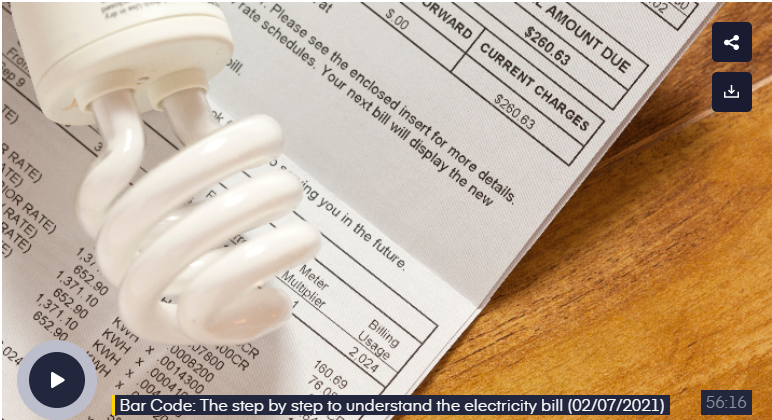There was an awful lot of discussion on the Javea Connect group last week about electricity prices. I found this article on SE12 and thought it may be of interest.
Rubén Sánchez, general secretary of FACUA and Jorge Morales, an expert engineer in energy, clarify in the bar code how the free rate differs from the regulated rate, how to know if adequate electrical power has been contracted, or if it compensates or not the hourly discrimination .
“We are in the European Union’s satisfaction queue with the electricity and gas companies, but six out of 10 Spaniards do not know what rate they have contracted. And 3 out of 4 do not know how to distinguish between the free rate and the regulated rate. What is the difference between them?
“The regulated tariff is set by the government, there is no room for manoeuvre on the part of the electricity company to establish the price, and it even establishes the structure of the tariff: what to put and how it should appear”, explains Jorge Morales, expert engineer in energy. On the other hand, the free rate is price-wise. A different question is to know if we are in the free or regulated market.
The regulated rate is the PVPC , which appears in a specific section of contract details and which may or may not have hourly discrimination. The key is to know that the only companies authorised to sell at the official rate, PVPC, are the reference marketers . The list can be consulted on the official website of the National Markets and Competences Commission .
Some of the best-known companies in the sector have a subsidiary that is the reference marketer, such as Endesa and Energía XXI; which can cause confusion among consumers.
The regulated rate allows access to the discounts of the Social Bonus, the discount on the electricity bill for vulnerable consumers and at risk of social exclusion, but it cannot be accessed when one is in the free price rates. Few people know this. Is sufficient pedagogy being done from the Administrations?
” Not even God knows this social bonus. If nobody knows it, nobody hires it ,” clarifies Rubén Sánchez, who demands more “powerful” institutional campaigns so that people know how the electricity market works.
CONTRACTED POWER
Another concept that we have to look at is the contracted power, which affects the number of appliances that we can use at the same time. We always pay it, even if we are not at home. According to the CNMC, almost 22% of households do not know which one they have and, for each section of power that one can reduce, this can mean a saving of 50 euros per year .
How do we know if we have the one that suits us? How do you look at that? The device that controls the contracted power is on the meter. A simple trick to know if we have the most suitable power is to pay attention to whether or not the leads jump; that is, if all the power goes out in the house. If this has not happened to you at least 3 times a year, you have more contracted power than necessary, Morales explains.
DOES IT COMPENSATE OR NOT THE HOURLY DISCRIMINATION?
“Hourly discrimination is a disguised subsidy ,” says Jorge Morales in the Bar Code, where he adds that it pays a lot to have it, because it reduces the regulated payments for consuming energy, those that do not depend on the company. Specifically, it reduces them to 14 hours a day and, in many cases, it is worth it for families without having to readjust all their consumption to the cheapest hours.
In February 2021 changing is a problem, because it cost 11 euros, but from April 1 it will be mandatory and, then, everyone will be able to take advantage of it: “Another thing is that we will detect it on the receipt,” underlines the engineer.”
There is a video on the original article in Spanish. If you want to watch it, click the link below.


